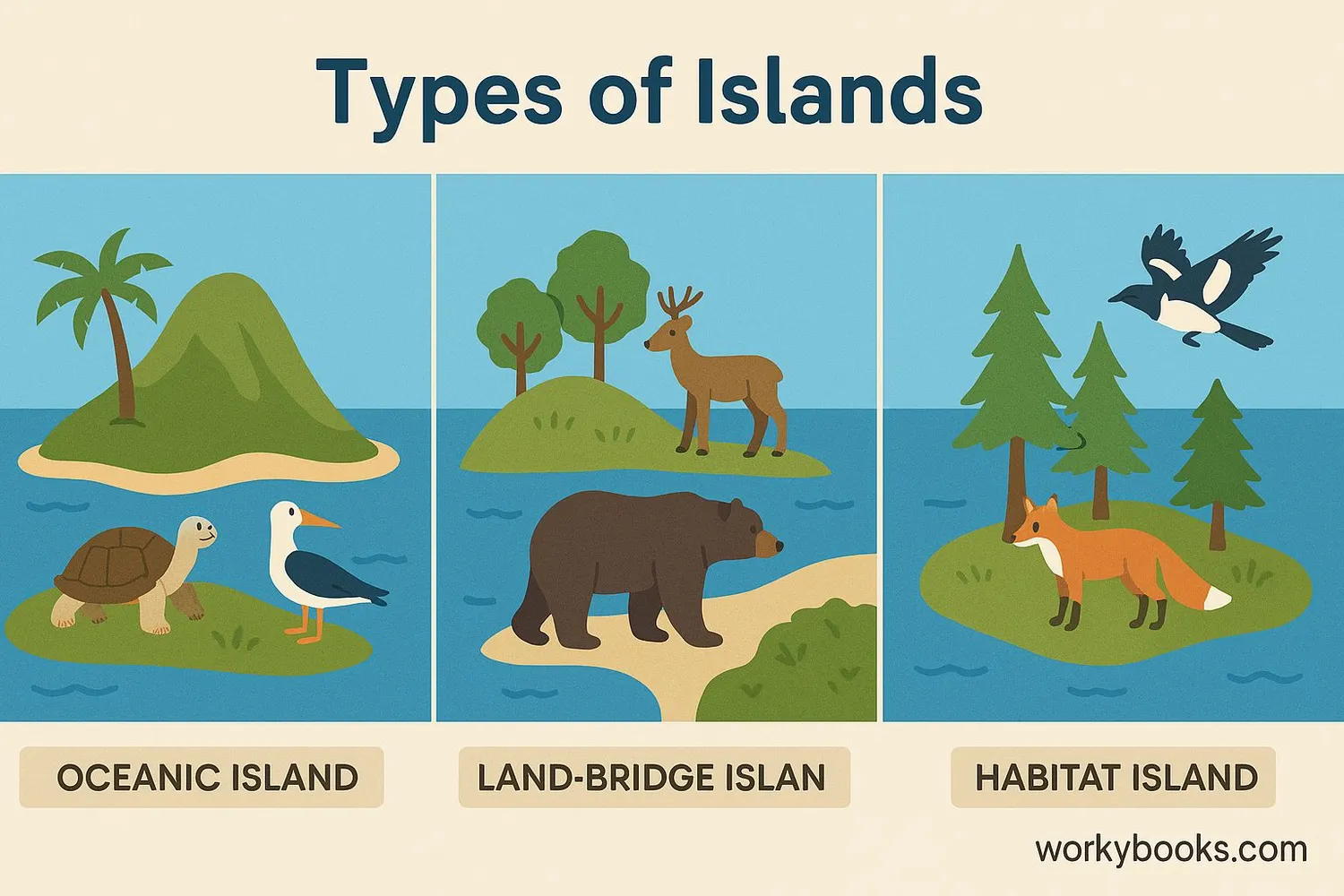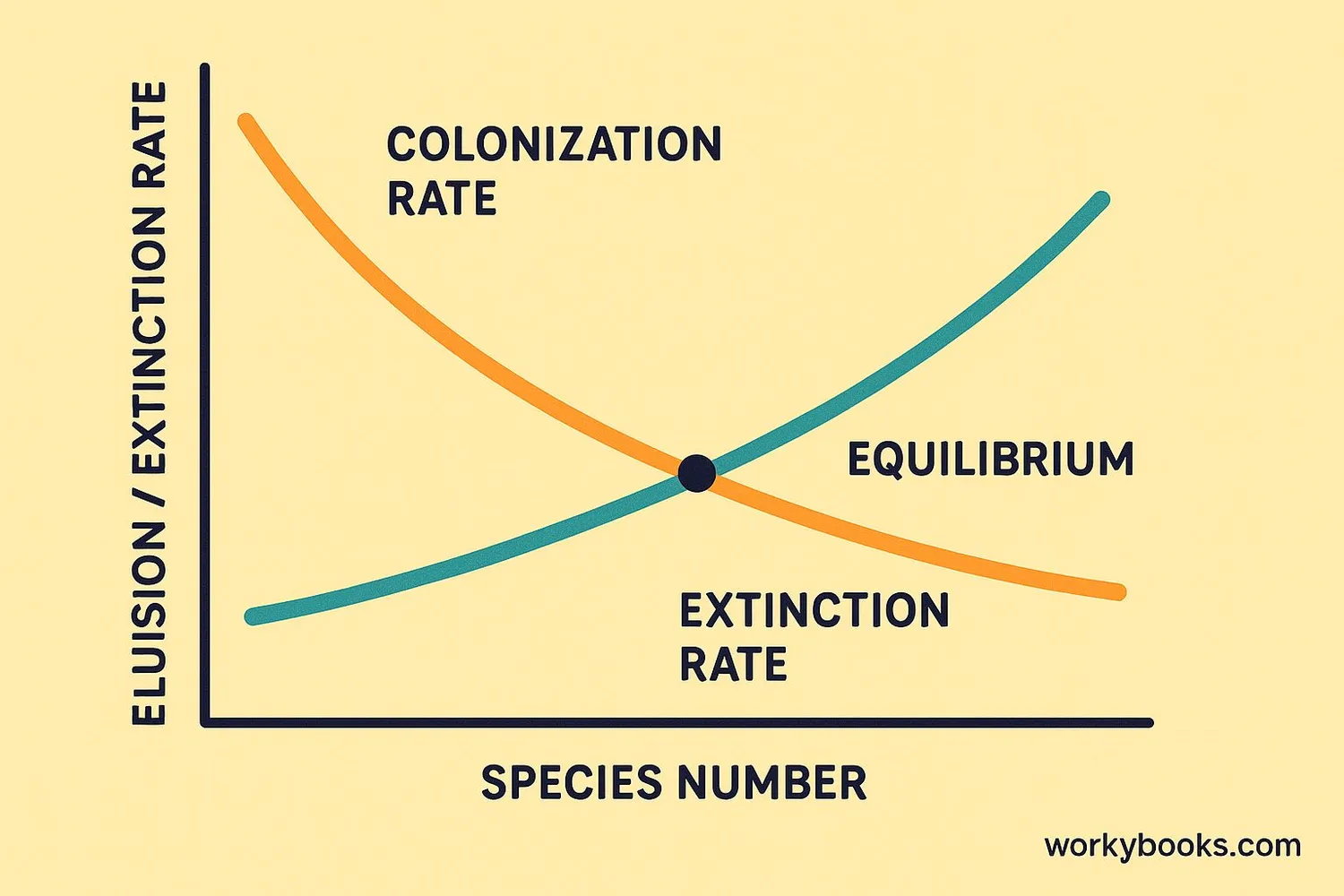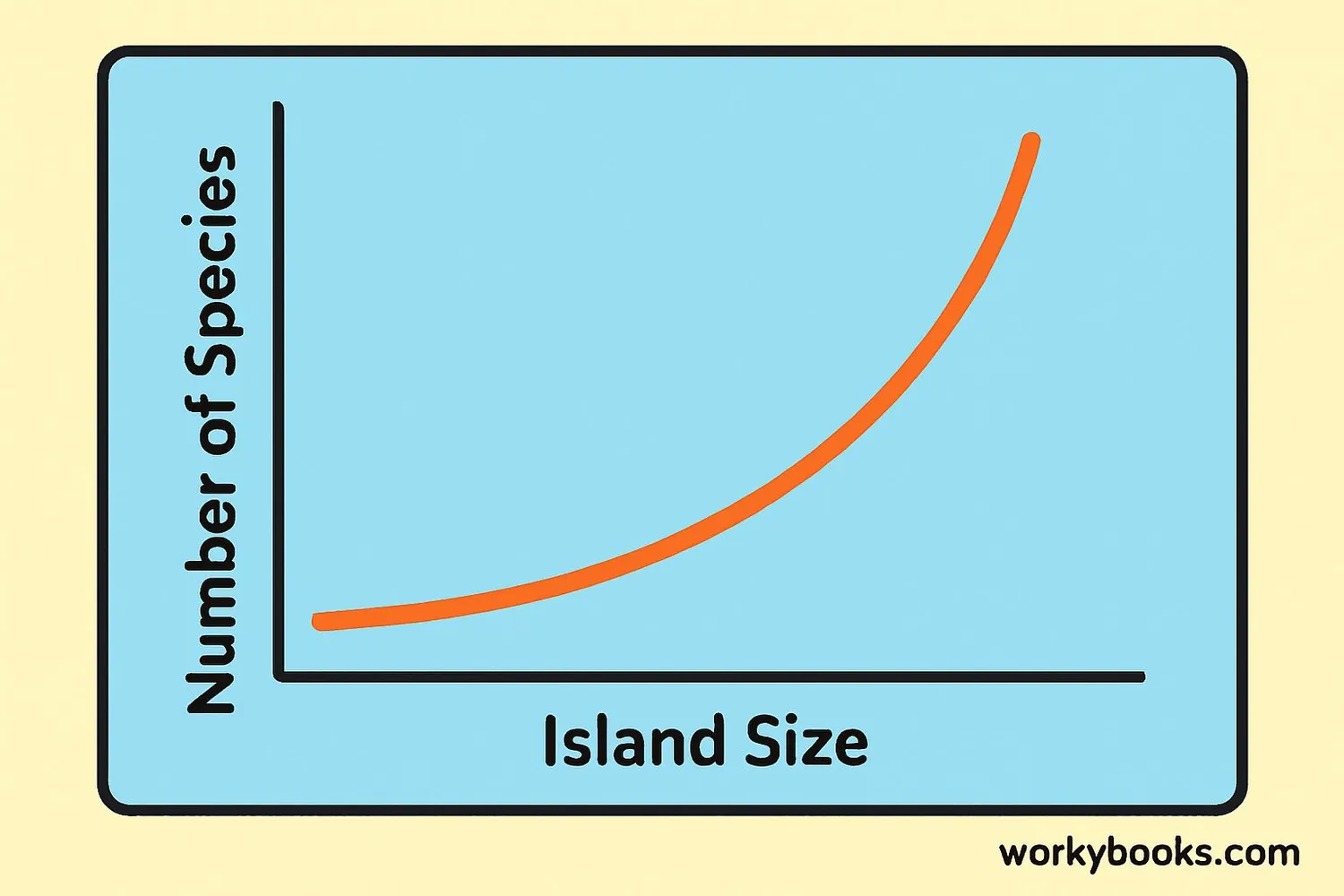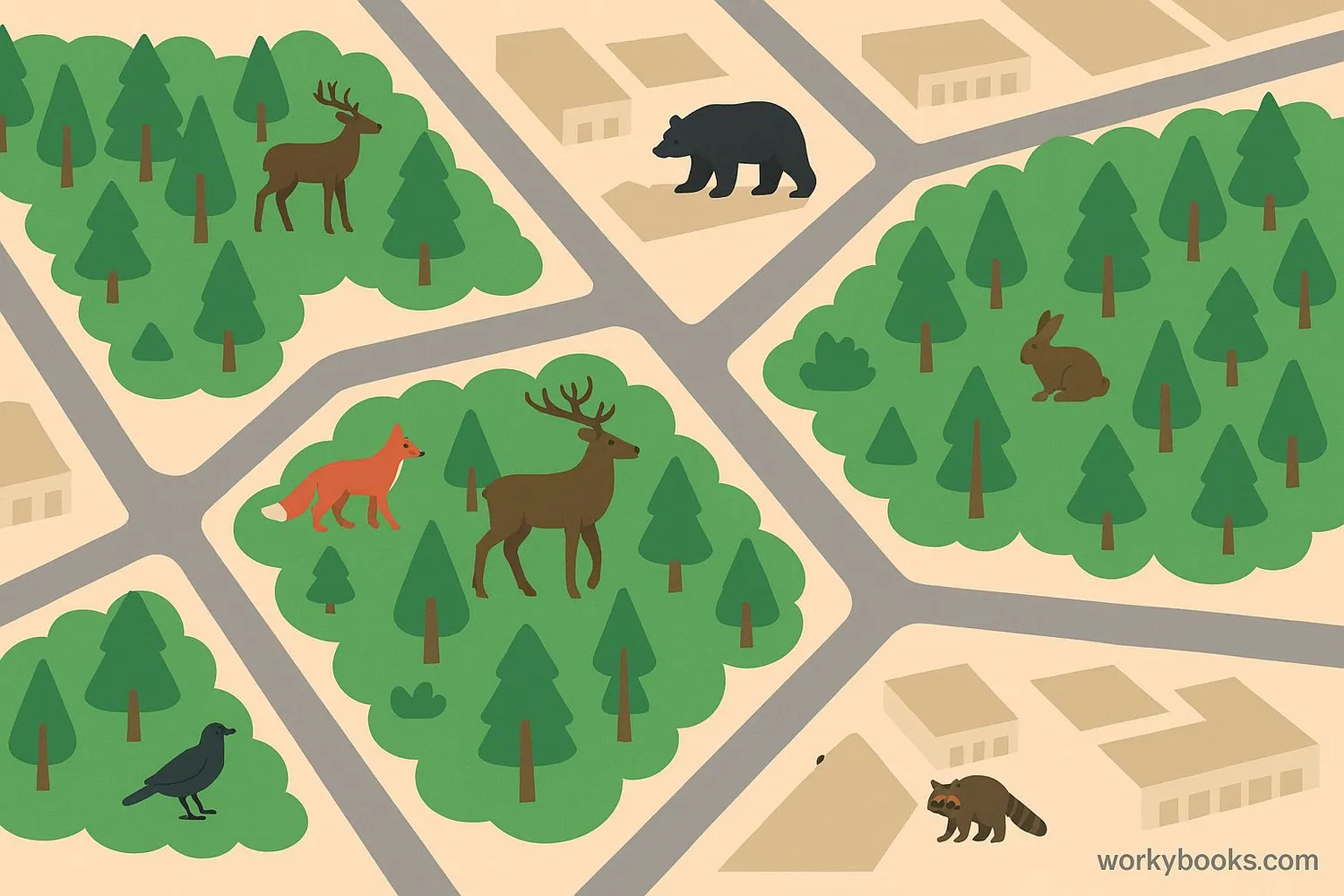Island Biogeography - Definition, Examples, Quiz, FAQ, Trivia
Discover how islands help us understand patterns of life on Earth!
What is Island Biogeography?

Island biogeography is the study of how species are distributed on islands and what factors affect their diversity. Islands aren't just land surrounded by water - they can also be "habitat islands" like forests surrounded by farmland or lakes surrounded by land.
Scientists study islands because they are like natural laboratories. Their isolation makes it easier to observe how species arrive, survive, and sometimes go extinct. The number of species on an island results from a balance between colonization (new species arriving) and extinction (species disappearing).
Science Fact!
Island biogeography helps us understand not just real islands, but also protected areas like national parks that are like "islands" of habitat!
The MacArthur-Wilson Theory

In the 1960s, scientists Robert MacArthur and E.O. Wilson developed a theory to explain patterns of species diversity on islands. Their Equilibrium Theory of Island Biogeography suggests that:
Colonization
New species arrive on islands from mainland sources
Extinction
Some species disappear from islands over time
Equilibrium
These processes balance at a certain number of species
According to their theory, two main factors affect species diversity on islands:
Island size: Larger islands support more species than smaller islands
Distance from mainland: Islands closer to the mainland have more species than distant islands
Theory Impact!
The MacArthur-Wilson theory revolutionized ecology and helped shape modern conservation biology!
Species-Area Relationship

One of the most important patterns in island biogeography is the species-area relationship. This describes how larger islands tend to have more species than smaller islands. This happens because:
More Habitat
Larger islands have more space and more types of habitats
Larger Populations
More space supports larger populations that are less likely to go extinct
More Resources
Larger areas have more food and resources to support different species
The species-area relationship follows a mathematical pattern: S = cA^z
Where S is the number of species, A is the area, and c and z are constants that change depending on the location and type of organisms. This relationship isn't just true for islands - it works for mainland habitats too!
Conservation Applications

Island biogeography theory has important applications for conservation biology. As natural habitats become fragmented by human activities, they turn into "habitat islands" surrounded by cities, farms, or other developed areas.
Conservationists use island biogeography principles to:
Design Protected Areas
Create larger reserves rather than several small ones
Create Corridors
Connect habitat fragments to allow species movement
Prioritize Conservation
Focus on areas that support the most biodiversity
The theory helps us understand that:
• Larger protected areas hold more species
• Connected habitats allow species movement between areas
• Isolated fragments lose species over time
By applying these principles, we can better protect Earth's biodiversity!
Island Biogeography Quiz
Test your knowledge with this quiz! Answer all 5 questions to see how much you've learned.
Frequently Asked Questions
Here are answers to some common questions about island biogeography:
Island Biogeography Trivia
Discover some amazing facts about island biogeography!
Island Evolution
Islands are famous for their unique species. The Hawaiian Islands have over 10,000 species found nowhere else on Earth! This happens because isolation allows species to evolve in unique ways.
Extinction Rates
Islands have experienced 75% of all animal extinctions since 1500, even though they make up only 5.3% of Earth's land area. This shows how vulnerable island species can be.
Experimental Proof
MacArthur and Wilson tested their theory by fumigating small mangrove islands to remove all arthropods, then watching how species recolonized. The results supported their predictions!
Sky Islands
Mountain peaks are like islands surrounded by "seas" of lower elevation. The Madrean Sky Islands in Arizona and Mexico show classic island biogeography patterns with unique species on each peak.





